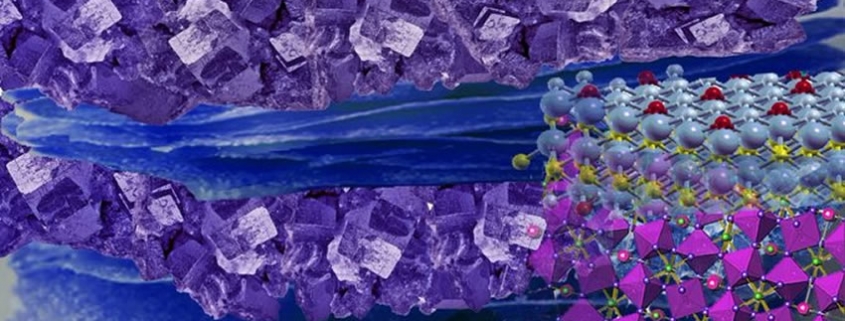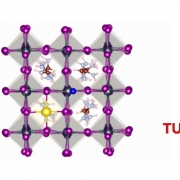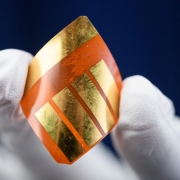Scientists increase efficiency of perovskite solar cells with innovative two-dimensional materials
Scientists from the National University of Science and Technology (MISiS) in Russia and the Tor Vergata University of Romehave found out that a microscopic quantity of two-dimensional titanium carbide called MXene significantly improves collection of electrical charges in a perovskite solar cell, increasing the final efficiency above 20%.
An international team of scientists from L.A.S.E. (Laboratory for Advanced Solar Energy), Department for Functional Nanosystems and High-Temperature Materials, both located at NUST MISIS, Russia, and Tor Vergata University of Rome, led by Professor Aldo Di Carlo, proposed an original approach to design perovskite solar cells with improved performances, namely the use of two-dimensional Titanium-Carbide compounds called MXenes to dope perovskite.
A thin film perovskite solar cell has a sandwich structure, where charges are moving from layer to layer through interfaces and selectively collecting at electrodes, as a result of sun light energy is converted into electrical current. In simple terms, electrons should be transported from absorber film to electrodes without losses that can be induced by internal energy barriers, and MXene incorporation improves this process.
MXenes were sequentially introduced in different layers of the perovskite solar cell: photo absorbing layer, electron transport layer based on titanium dioxide, and at the interface between them. After analysis of output performance of the devices, we found out that the most efficient configuration is the one where MXenes are introduced to all the layers, including the interface. The experimental results are confirmed by appropriate modeling of the obtained structures.
It is the first report that described not only a series of experiments and the obtained results, but also includes a clear explanation of the mechanisms occurring in the modified perovskite solar cell from the physical-chemistry point of view.
Currently, the team is trying to stabilize the resulting device and increase its efficiency.
Professor Di Carlo commented:
“We discover that MXenes, owing to their unique two-dimensional structure, can be used to tune surface properties of perovskite permitting a new optimization strategy for this III-generation solar cell”,
Danila Saranin, one of the authors, researcher at L.AS.E. said:
“To enhance the efficiency of perovskite solar cells, we need to optimize the device structure and master interface and bulk properties of each single layer to improve the process of charge extraction to the electrodes. To solve this problem, together with our Italian colleagues we performed a series of experiments by incorporating a microscopic amount of MXenes in the perovskite solar cell. As a result, we achieved increase of the efficiency for devices by more than 25 %, compared to the original prototypes”.
Anna Pazniak, one of the authors, added:
“The main result of this work is identification of changes in the electrical properties of semiconductors, caused by introduction of MXenes. Hence, this new nanomaterial possesses great potential for the use in large scale production,”
Journal Rererence
Titanium-carbide MXenes for work function and interface engineering in perovskite solar cells. A. Agresti, A. Pazniak, S. Pescetelli, A. Di Vito, D. Rossi, A. Pecchia, M. Auf der Maur, A. Liedl, R. Larciprete, Denis V. Kuznetsov, D. Saranin & A. Di Carlo. Nature Materials (2019)
Source: The National University of Science and Technology (MISiS). Photo Credit: © The Tor Vergata University of Rome. Illustrative representation of the photoactive layer of modified perovskite with MXenes.










